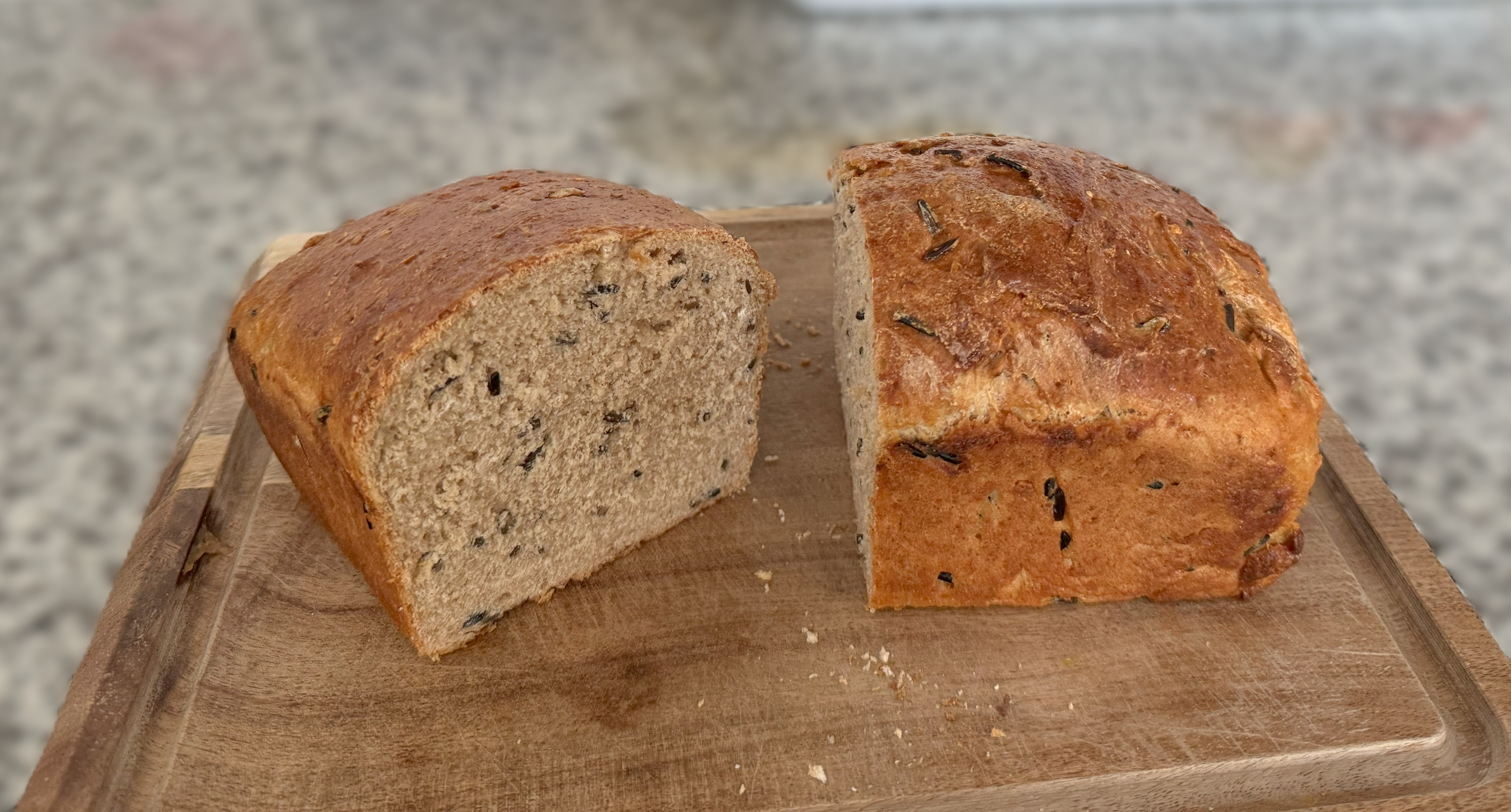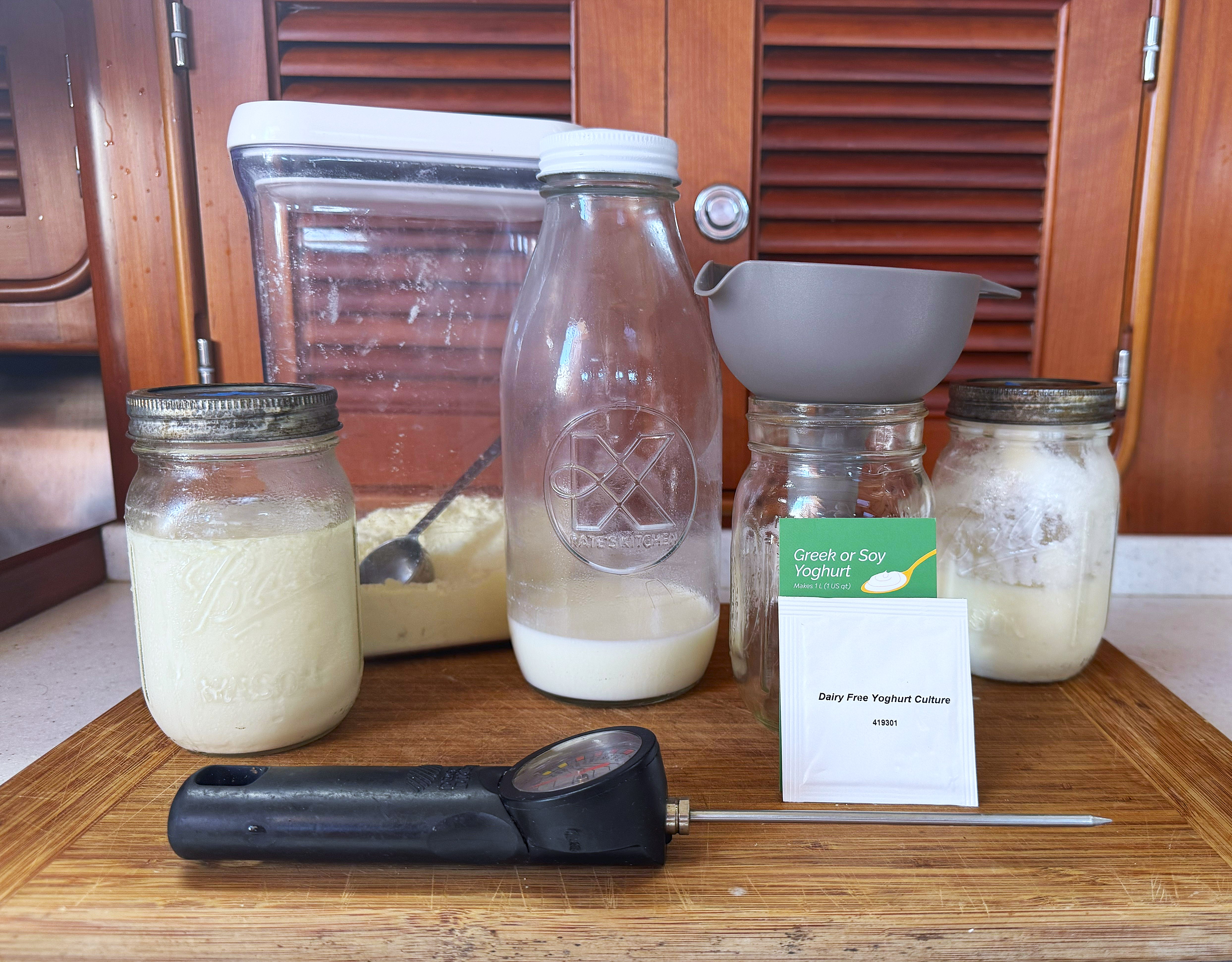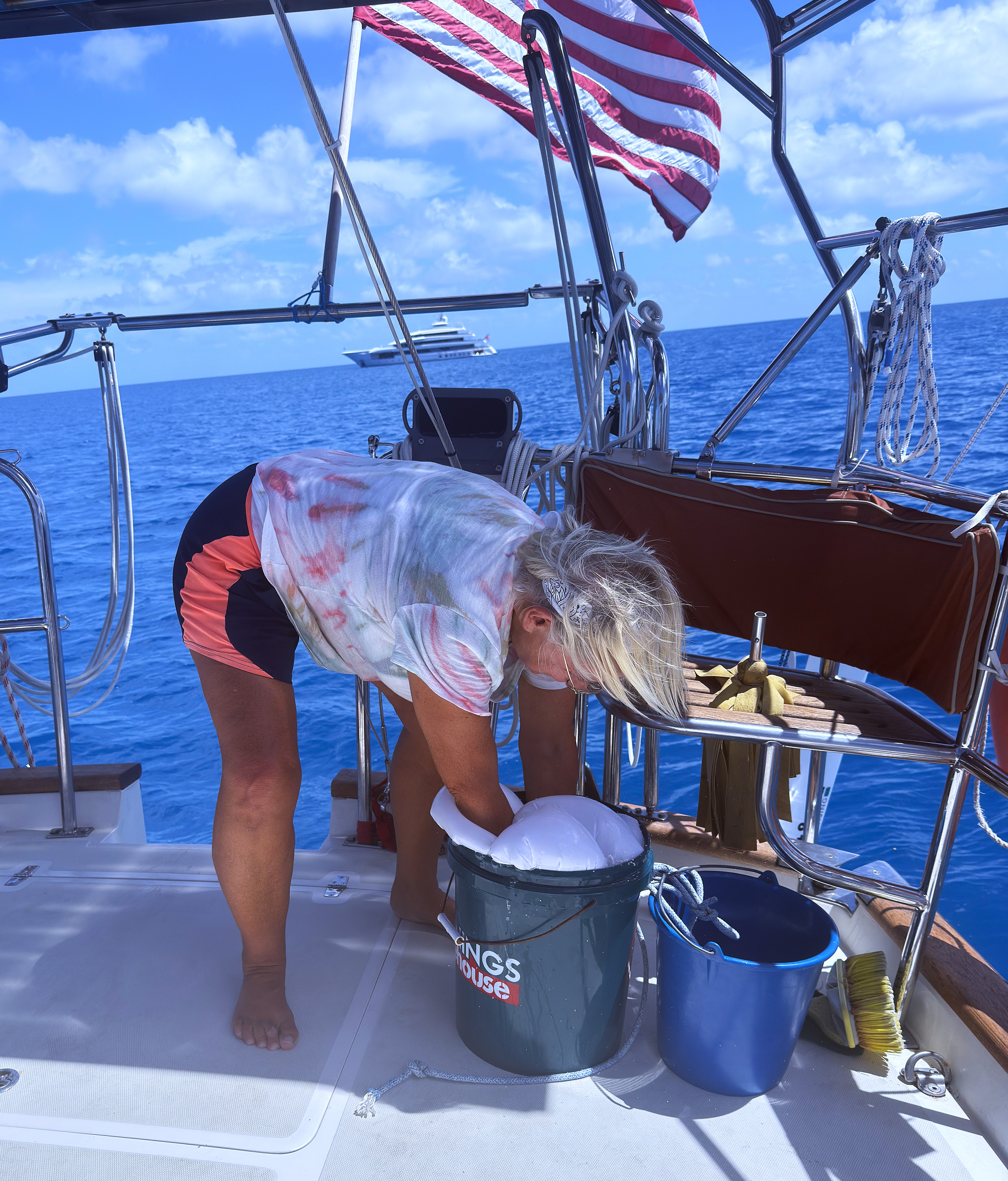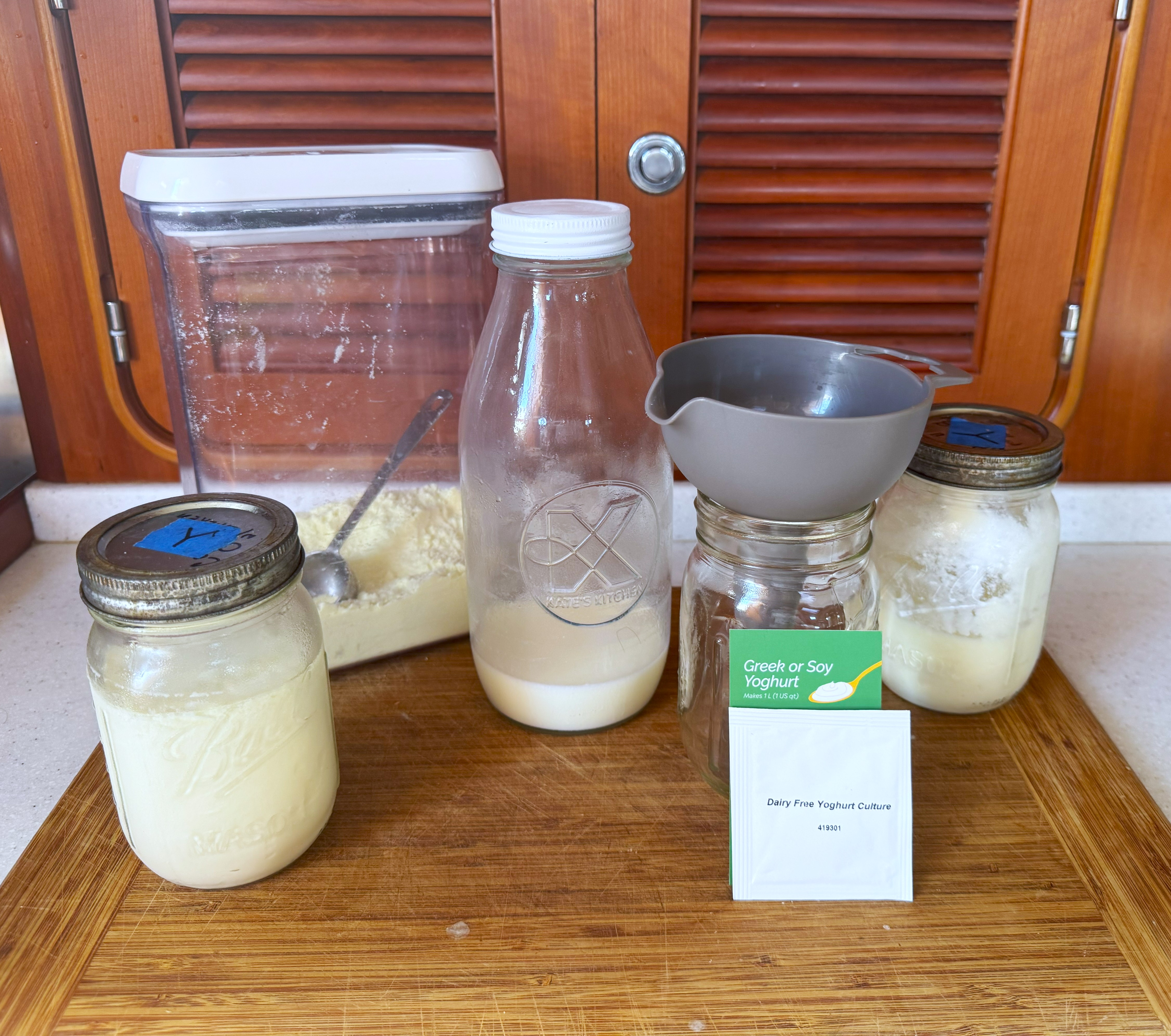When my son moved to Minneapolis, he called his lifestyle “urban homesteading.” He brewed beer, then mead, then kombucha. He made yogurt, biked everywhere, shopped at the local farmer’s market, and supported neighborhood businesses. To me, it was the art of self-sufficiency: farm-to-table instead of big box, choices that bolstered community while lightening the carbon footprint.
On Wanderlust, I’ve discovered our own version — blue water homesteading. Much like urban homesteaders who transform backyards or rooftops, cruisers turn their boats into floating homesteads. Watermakers replace rain barrels, solar panels and wind generators stand in for rooftop systems, and lockers serve as pantries. It’s provisioning with intention, maintaining energy independence, and finding freedom in the natural rhythms of wind, tide, and sunlight. A life untethered yet deeply grounded.
Provisioning and the “Stash”
Eight months into our voyage, we still have Mason jars of soups and stews we canned before departure, along with a healthy reserve of paper towels and toilet paper. That stash carries us until we can reach local markets and figure out the supply ship schedule, when shelves are most likely to be full. In the Tuamotus, a rare find of fresh produce or eggs feels like a small victory, while staples such as rice, beans, crackers, powdered milk, and pasta are usually available. Wines, Hinano beer, locally baked baguettes, and the occasional wedge of French cheese round out the choices.
We build meals around whatever protein turns up in the grocer's freezer case — chicken, pork, or seafood — and adapt a handful of recipes with different spices for variety. Fresh when we have it; canned when we don’t.
Yogurt on the High Seas
I routinely make about four pints of Greek yogurt using powdered whole milk. The method is simple: whisk 1.5 cups of milk powder with 6 cups of water, heat to 180°F on our induction burner, then cool to 105–110°F. Too hot and you’ll kill the cultures.
For the first batch, I added a co-op yogurt starter I’d packed from New Zealand. After that, I simply saved a third of a cup from the earlier batch to seed the next. One starter packet stretches to 4–5 batches this way.
I pour the mixture into four Mason jars, set them in hot water inside our Breville cooker, cover with a towel, and let them sit 8–10 hours: don't lift the lid! Then chill for a few hours in the fridge and the Greek yogurt is ready to enjoy with fruit, granola, or whatever toppings we have on hand.


Bread in the Tropics
Bread making in the tropics is its own adventure. Heat and humidity change everything—rise, texture, crust. Even the flour is different from what we provisioned, so every loaf feels like an experiment.
My favorite whole wheat recipe still works, but with adjustments: a little more flour during kneading, about 10% less yeast and liquid, and cooler water since yeast activates faster in the heat. I keep yeast in the fridge to stretch its life; a freezer would be better, but that’s a luxury we don’t have aboard.
And when in doubt? With Starlink, help is only a search away. Type in baking bread in the tropics and you’ll find more advice than you ever thought you "kneaded."
Cooking and Energy Awareness
Of course, baking bread—or anything else—also ties back to energy use. Every loaf of bread, batch of yogurt, or morning pot of coffee requires power. Our Breville, induction burner, and drip coffee maker all pull from the same solar-fed batteries. That means staggering appliance use and staying tuned to how much sun we’ve banked. It’s a constant dance between what we want to cook and what the weather allows.

Laundry on the Lifelines
While laundry services do exist in the Tuamotus, our limited wardrobes rarely demand them. Most days a five-gallon bucket, a splash of detergent, and enough water to swish t-shirts, shorts, and undies will do. A few clothespins — or pegs, as our Kiwi crewmate calls them — and the lifelines become our clothesline.
I used to wonder why my country cousins and Midwestern friends preferred line-drying when they had perfectly good dryers. It seemed so labor-intensive. Yet they waxed poetic about the freshness of sun-dried clothes. Out here, I get it. I have to say, they were right.
Resilience at Sea
Blue water homesteading isn’t about perfection — it’s about resilience, adaptation, and the small satisfactions of making things work with what you have. In that sense, it feels a lot like its urban counterpart: self-sufficiency with a dose of creativity, flavored by the place you happen to be. It is, in the end, a life untethered — yet deeply grounded.
